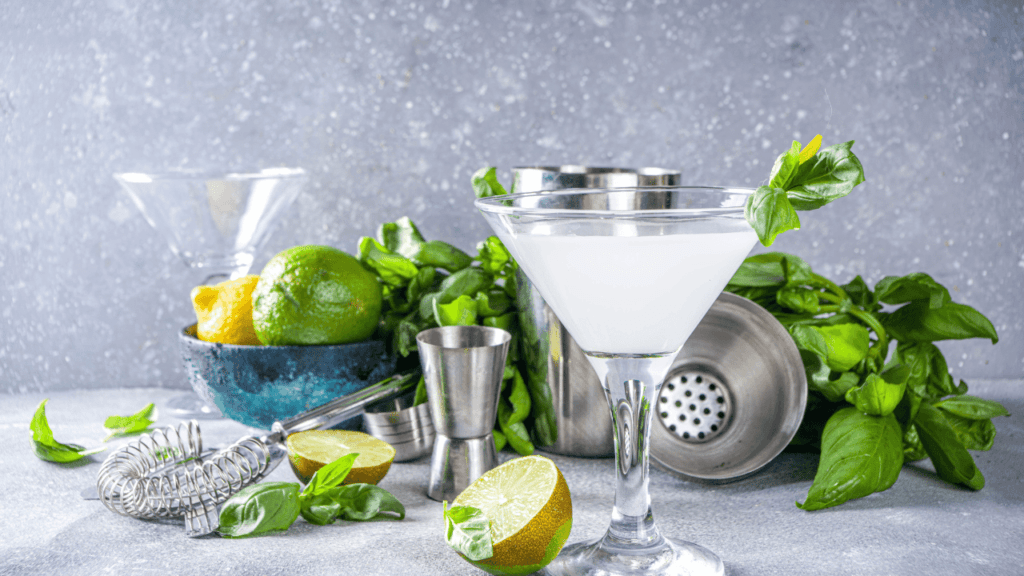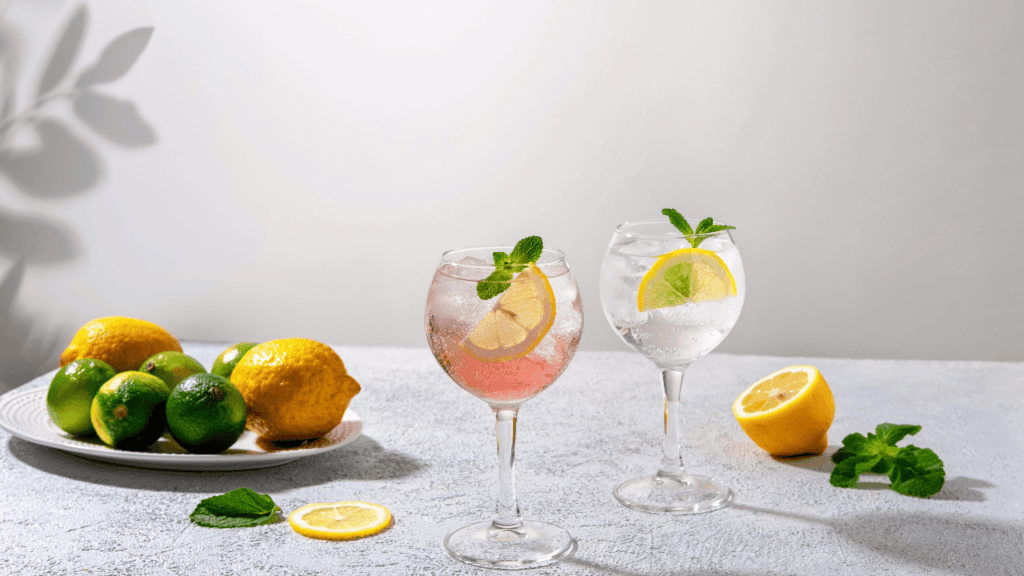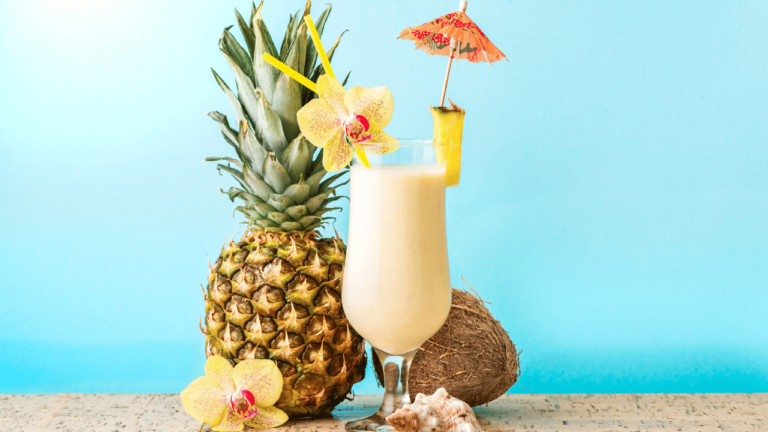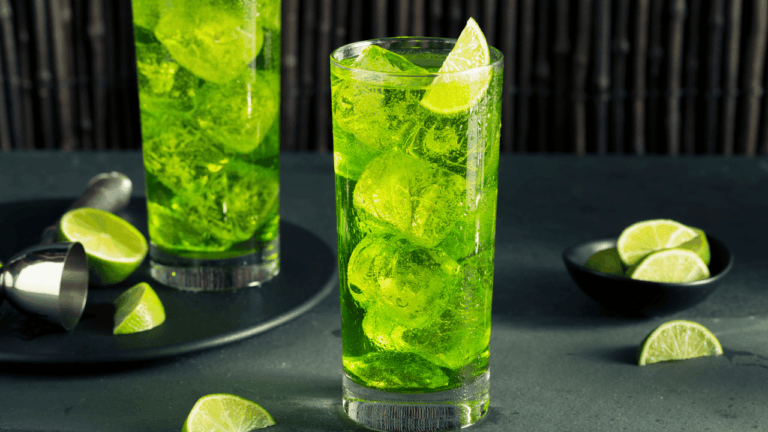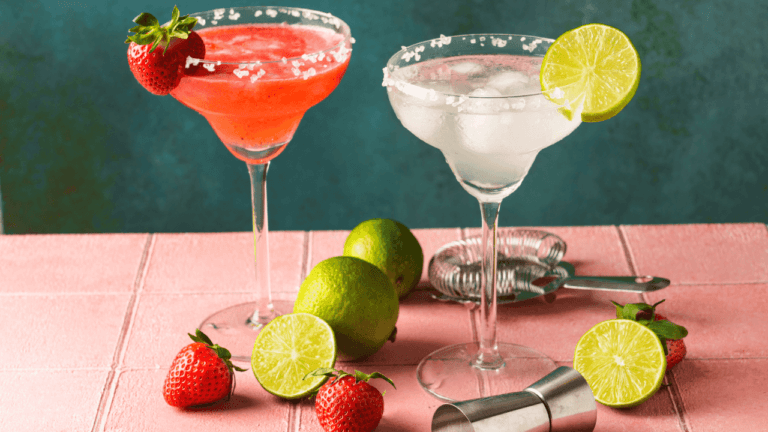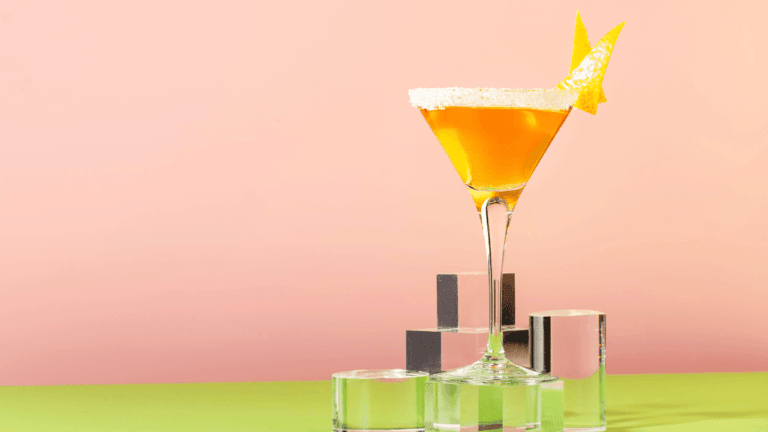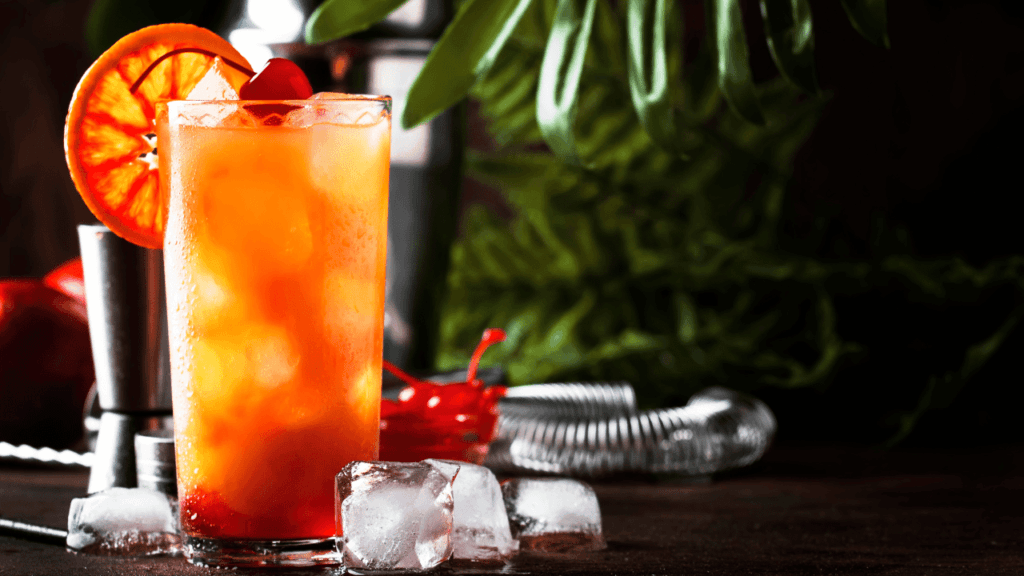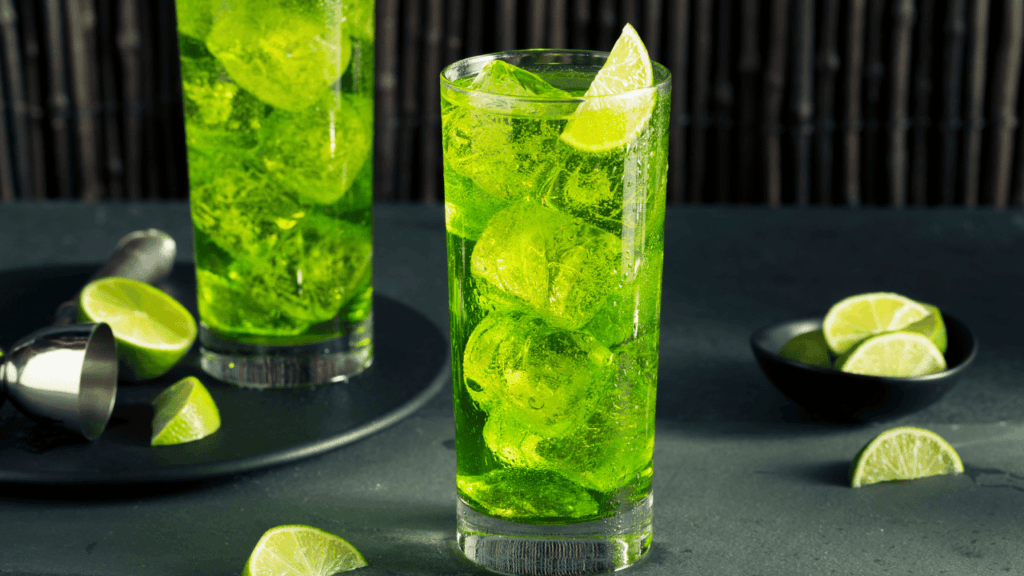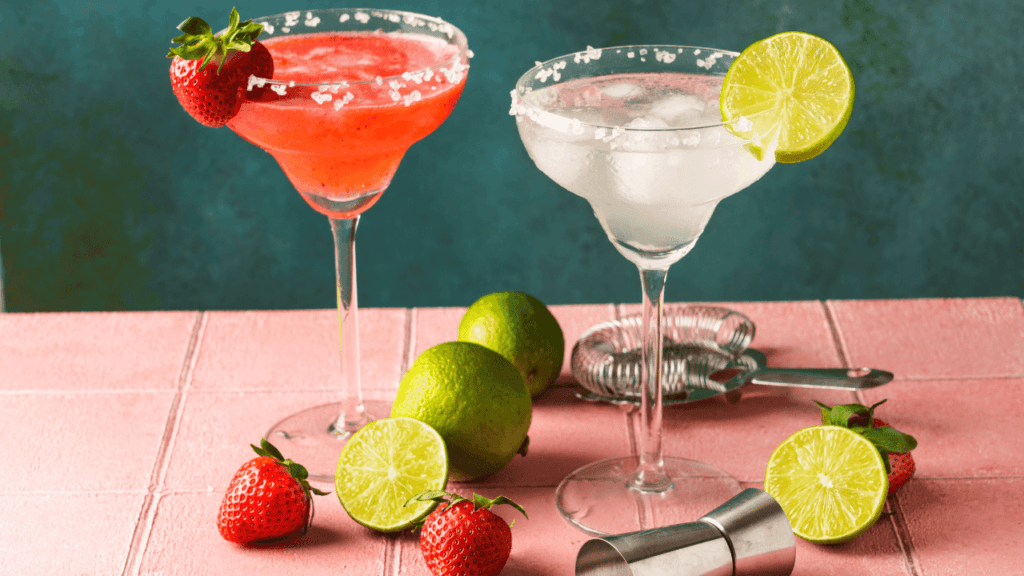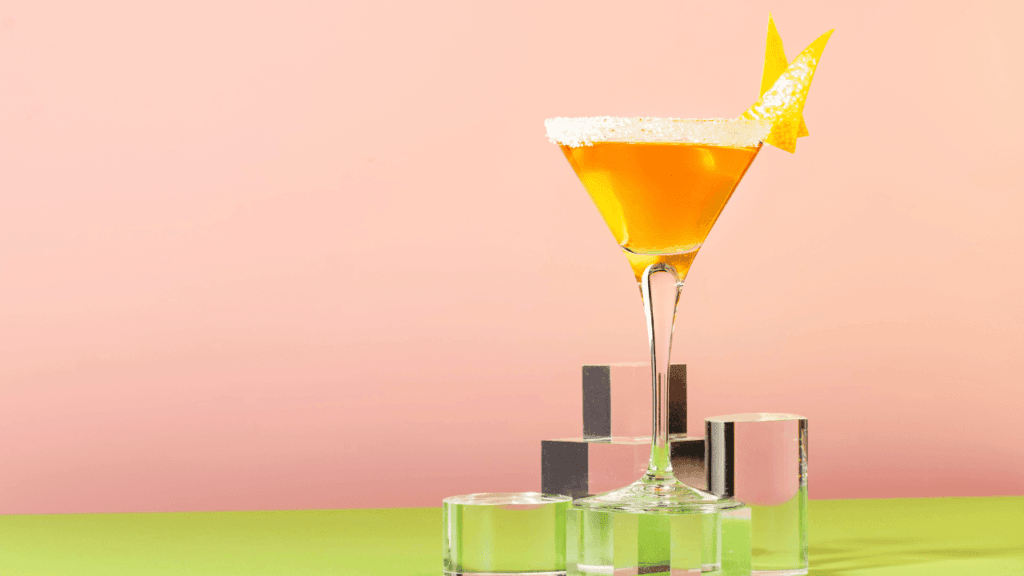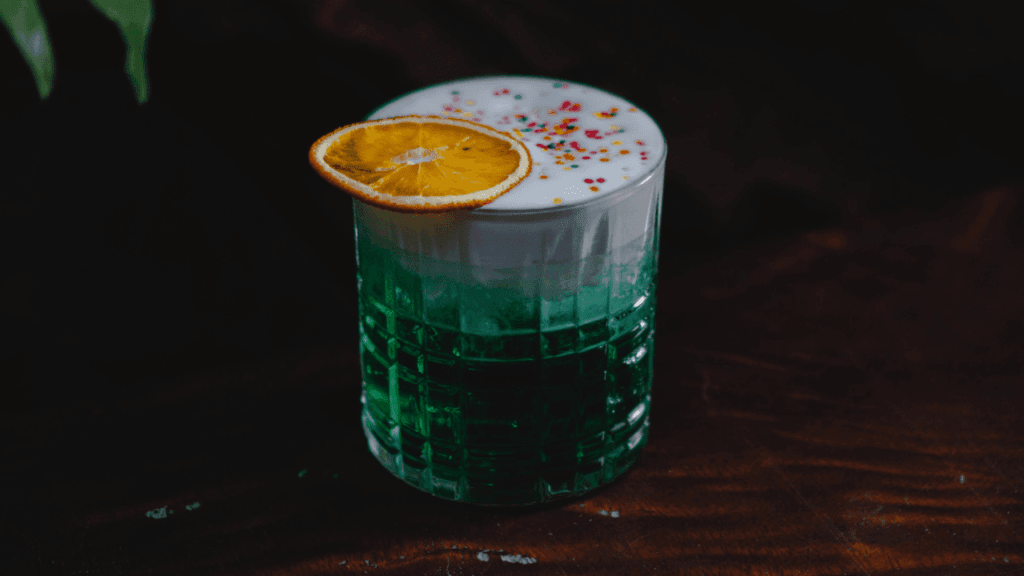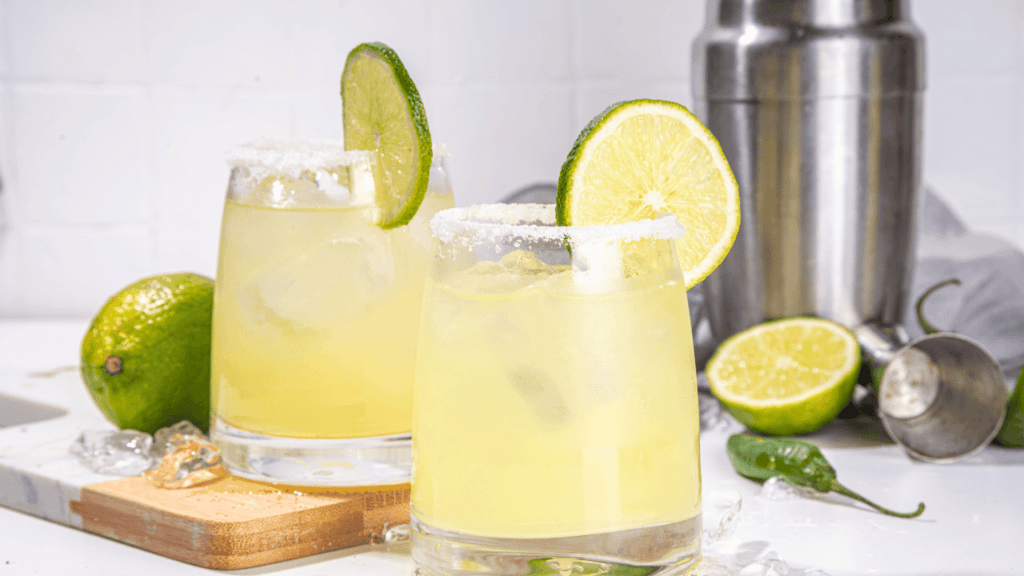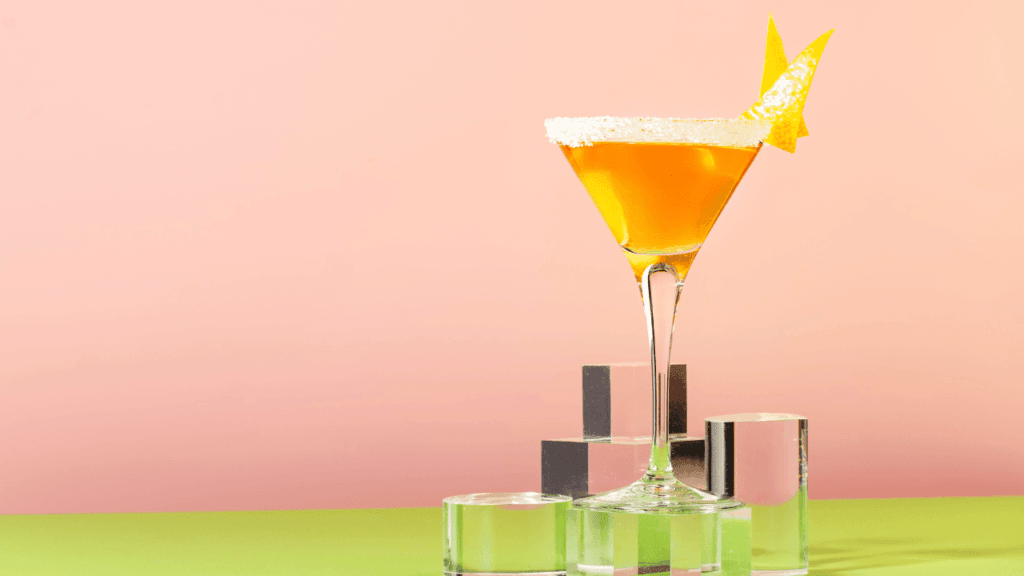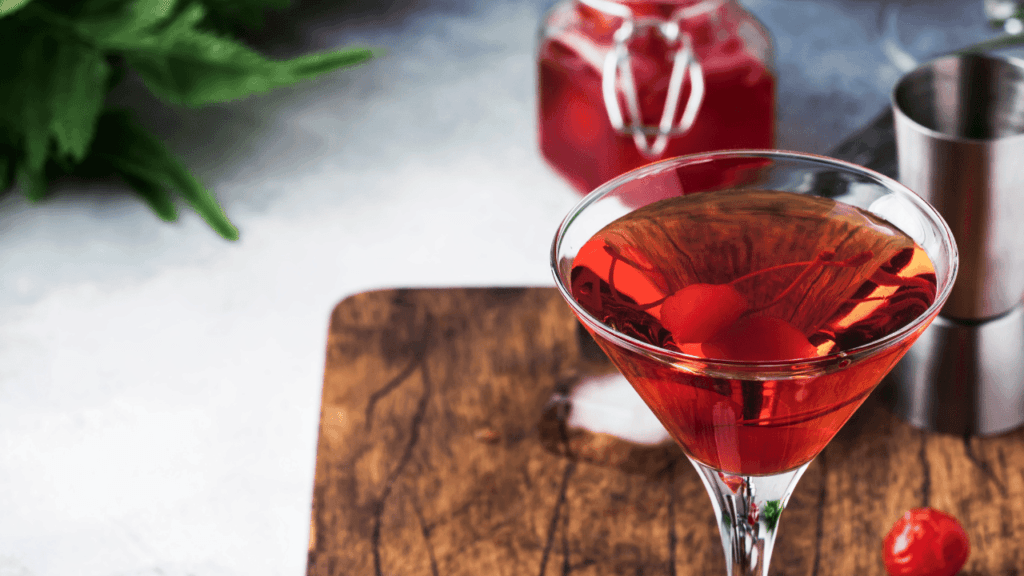Looking to relax after a long day or want to impress at your next gathering? Learning to make a classic martini can elevate your evening. With our gin martini recipe, you’ll know how to create a martini that’s both balanced and refreshing. This recipe dives into the history and mixology behind a great gin martini, turning it into more than just a drink.
As you practice, you’ll get to enjoy the rich flavor of gin. It’s a timeless pleasure waiting for you.
Key Takeaways
- Discover the ideal blend of smooth gin to dry vermouth for a timeless Gin Martini Recipe.
- Learn whether you should shake or stir to achieve your preferred taste and temperature.
- Understand the caloric content of your martini to enjoy responsibly.
- Explore garnish variations to tailor your cocktail to your personal palate.
- Uncover the secrets of making a martini with alternative spirits, such as vodka.
- Acquire knowledge about the best brands like The Lakes Gin and Noilly Prat Vermouth for your cocktail recipe.
- Gain insights into stirring techniques and the art of achieving martini perfection.
The Timeless Appeal of a Classic Martini
The classic martini is a symbol of elegance and tradition. It’s a gin cocktail that has won the hearts of many. Its mix of gin and vermouth, with an olive or twist, provides a clean, sophisticated taste. This cocktail’s history is fascinating, and its variations are loved by many.
The Origins of the Martini Cocktail
The martini’s story starts in the late 19th century with the Martinez cocktail. This early version was sweeter, with more vermouth. Over time, the martini evolved, becoming a symbol of refinement and simplicity. Today, it’s known for its strong gin flavor, served cold with a hint of vermouth.
Why the Classic Martini Remains a Favorite
The martini is more than just a drink; it’s a sign of sophistication. It’s famous for its elegance, from James Bond’s “shaken, not stirred” to the clinking glasses in fancy bars. The martini’s popularity shows its ability to adapt and its lasting charm. For those who love making cocktails, there are many recipes and histories to explore.
The martini’s journey from a simple gin cocktail to a mixology icon is remarkable. It’s a symbol of sophistication, loved at social events and in pop culture. Its enduring appeal shows its ability to evolve and remain relevant.
Choosing the Right Ingredients for Your Gin Martini Recipe
To make the best martini recipe, start with top-quality ingredients. The key is the quality gin. Ford’s Gin and Beefeater are great choices, each offering a unique flavor. The dry vermouth is also crucial, adding a subtle yet rich layer to the drink.
Check out this guide for more on mixing these spirits. It’s perfect for both newbies and experienced bartenders. You’ll learn how to make a classic gin martini that’s both elegant and full of history.
- Ford’s Gin for a pronounced juniper flavor
- Beefeater for a floral hint
- Plymouth Gin for a softer, mellow taste
It’s important to know that vermouth should be fresh and kept cold. It lasts about three months, so use it wisely for the best taste.
The best martini recipe might vary, but a good mix is 3 oz. of gin to 0.5 oz. of dry vermouth. Add a dash of orange bitters for a perfect balance.
The gin martini is versatile, appealing to many. It can be stirred or shaken, garnished with a lemon twist or olives. The quality of your ingredients will make your martini stand out.
For martini lovers, the magic is in the mix and the moment it’s enjoyed. So, pick the right gin, mix it well, and enjoy every sip of your perfectly crafted gin martini.
Essential Bar Tools for Crafting the Perfect Martini
Making the perfect martini needs precision and the right tools. Each tool has a special role, from measuring to serving. Let’s explore the must-haves for every mixologist.
From Shaker to Strainer: What You’ll Need
A cocktail shaker is a must-have. A 28-ounce Boston shaker is often recommended for its design. It has a pint glass and a metal jug for mixing.
The Cobbler Shaker is also popular, especially for beginners. It has a built-in strainer. The Hawthorne strainer is great for keeping ice and solids out of your drink.
For a smooth drink, use a double straining method. This means using both a Hawthorne and a fine strainer.
A jigger is key for measuring the right mix of gin and vermouth. It helps make sure every martini tastes the same.
Why the Right Glassware Matters
The martini glass is iconic for its beauty and design. Its wide brim lets you smell the drink better. The stem keeps it cold.
Experts say having different glasses for different drinks is important. For example, use a Coupe glass for martinis and a Rock glass for strong drinks.
Quality glassware is crucial, say experts. Choose durable, well-balanced glasses. Avoid fancy designs that get in the way.
For better cocktail-making, choose tools that are both functional and elegant. Learn more about mixing Scotch and wine in cocktail mixology. This will help you create more than just drinks; it will create an experience.
Finding Your Ideal Gin-to-Vermouth Ratio
Finding the perfect gin martini recipe is all about the gin and vermouth balance. This balance greatly affects the taste and class of a classic martini. Whether you like it dry or more flavorful, adjusting these ratios can make your cocktail recipe just right for you.
| Martini Type | Gin to Vermouth Ratio | Approx. ABV |
|---|---|---|
| Classic | 2 parts gin, 1 part vermouth | 28% |
| Dry | 4 parts gin, 1 part vermouth | 30% |
| Fifty-Fifty | Equal parts gin and vermouth | 31% |
| Upside-Down (Wet) | 1 part gin, 5 parts vermouth | 19% |
| James Bond-Style | 3 parts gin, 1 part vodka, 0.5 part Kina Lillet | 29% |
Understanding the impact of these ratios on health and enjoyment is key. Exploring the health benefits of moderate Scotch cocktails can offer insights. It encourages a balanced way to enjoy spirits.
Try different ratios to see how gin and vermouth work together. Start with the classic mix and adjust it to find your perfect drink.
To Shake or to Stir Perfecting Your Martini Technique
Are you new to making martinis or do you want to improve your gin cocktail skills? Knowing the difference between shaking and stirring is key. This guide will help you understand these techniques and how they can make your martini better.
The Impact of Technique on Taste and Temperature
Shaking a martini adds tiny ice shards that chill it fast. This makes the drink vibrant and slightly frothy, with thin ice on top. It brings out a sharp taste that some people love for its refreshing quality.
Stirring, on the other hand, cools the drink gently. It keeps the texture smooth and lets the flavors of the gin and vermouth shine. This is great for those who prefer a clear, flavorful drink.
Pros and Cons: Shaken vs. Stirred Martinis
Whether to shake or stir depends on your taste and the ingredients. Shaking makes the martini cold and slightly bubbly, which is crisp and refreshing. But, it might dilute the gin too fast for some.
Stirring is better for drinks with just liquor. It gives a smoother drink and lets the gin and vermouth flavors come through better.
Try both methods, especially with a 50:50 martini. This mix of gin and vermouth is popular. It’s a good way to learn about making cocktails and find the perfect drink for any event.
| Martini Type | Technique | Recommended Gin | Recommended Vermouth |
|---|---|---|---|
| Classic Martini | Stirred | Gordon’s London Dry Gin | Dolin French Vermouth |
| 50:50 Martini | Choice of Shaken or Stirred | Choice of Premium Gin | Equal Part Vermouth |
| Dirty Martini | Stirred | Your Choice of Gin | Less Vermouth, Addition of Olive Brine |
Learning to make the perfect martini is a valuable skill. By knowing how shaking and stirring affect your drink, you can make it just right for you or impress others. Start this perfect martini tutorial and become a master of cocktail making.
Garnishing Your Gin Martini A Touch of Elegance
Exploring martinis reveals the importance of the martini garnish. It boosts the drink’s look and taste. From a simple lemon twist to unique garnishes, each adds a special touch to your cocktail recipe.
Classic and Creative Garnishes to Enhance Your Cocktail
A lemon twist not only beautifies your drink but also adds a zesty scent. This scent brightens the gin’s flavors. Olives, a favorite among martini lovers, add a savory taste that pairs well with crisp gins like Beefeater.
Cocktail onions bring a hint of sweetness, blending the gin and vermouth’s herbal tastes. For something different, try garnishes like thyme or sage leaves. These can highlight the unique flavors of gins like Plymouth, known for its balanced taste.
Orange rind can also enhance a martini, especially when using Lillet Blanc instead of dry vermouth. It adds a honeyed complexity to the drink.
Here’s a guide to help you choose garnishes for different gins and vermouths:
| Gin/Vermouth | Recommended Garnish | Flavor Notes Enhanced |
|---|---|---|
| Beefeater Gin | Olive (Sicilian style) | Herbal, Clean |
| Plymouth Gin | Lemon Twist | Citrus, Botanical |
| Dolin Dry Vermouth | Cocktail Onion | Slight Bitterness, Herbal |
| Noilly Prat Extra Dry | Orange Rind | Dry, Crisp |
| Lillet Blanc | Sage Leaf | Floral, Honeyed |
Choosing the right garnish makes your martini both beautiful and tailored to your taste. Whether you like a simple lemon twist or a more complex garnish, the right choice can make every sip special. It turns your martini into a personal expression of taste and creativity.
Understanding Martini Variations: Dry, Dirty, and Beyond
The world of martinis is full of flavors, from very dry to delightfully dirty. Learning about martini variations like the dry martini and the dirty gin martini can make drinking and bartending more fun. Each type has its own way of being made, tasted, and served, fitting different tastes and events.
The dry martini is made with more gin and a bit of dry vermouth. It’s often garnished with a lemon twist or olives. This martini is loved for its clean taste, letting the gin’s flavors stand out with a hint of vermouth.
The dirty gin martini is similar but adds olive brine. This gives the drink a salty twist, making the gin taste richer. It’s perfect for those who like a bit of saltiness in their martini.
| Martini Type | Main Ingredients | Garnish Options |
|---|---|---|
| Dry Martini | Gin, Minimal dry vermouth | Lemon twist, Olives |
| Dirty Gin Martini | Gin, Dry vermouth, Olive brine | Olives |
| Classic Martini | Gin, Dry vermouth | Olives, Lemon rind twist |
The charm of martini variations like the dry martini and dirty gin martini is in their taste and history. Whether you like the simple taste of a dry martini or the salty kick of a dirty gin martini, knowing these variations makes mixing and enjoying cocktails more rewarding.
Mastering the Stir: Achieving Martini Perfection
To truly enjoy a gin martini, you must understand the art of stirring. Stirring is preferred over shaking for its ability to create a clear and smooth drink. It cools the drink and gently dilutes it, enhancing the gin’s flavors.
Making a martini is all about precision. Stir the mix for 20-30 seconds to get it just right. This ensures the gin’s strong taste is balanced with the vermouth’s subtle aroma.
For a classic Martini, Master Distiller Jared Brown’s recipe includes 50ml Sipsmith London Dry Gin, 10-15ml dry vermouth, and 1 lemon twist, showcasing the elegant simplicity of this legendary cocktail.
Strain the mix into a chilled glass and add a garnish. Choose something simple like an olive or a lemon twist to enhance the flavors.
DUKES in Mayfair, London, is known for its exceptional Martini. They focus on quality ingredients and precise techniques, creating a truly remarkable drink.
Mastering the stir is more than just following steps. It’s about honoring the ingredients and the craft. Making the perfect martini is a mix of science and art, where each element is carefully balanced to showcase the gin’s complexity.
Mixologist Ryan Chetiyawardana believes a Martini should be tailored to your taste. Whether it’s a classic or a modern twist, the key is in the quality and ratio of ingredients, stirred to perfection. The secret to the best martini recipe is in the enjoyment of its unique character.
The Perfect Serve: Presenting a Chilled and Charming Gin Martini
Learning to serve a martini at home makes the experience better. The gin martini is known for its subtle flavors and aromas. It needs a presentation that matches its elegance. Here’s a guide that shows how to serve it with both precision and style.
First, chill the martini glass. The best way is to put it in the freezer for at least an hour. If you’re short on time, fill the glass with ice water, then dump it out just before serving. This keeps the martini cold and brings out the gin’s botanicals and the vermouth’s crispness.
| Ingredient | Amount | Description |
|---|---|---|
| Gin | 5 ounces | Select a premium gin to elevate the drink’s profile. |
| Dry Vermouth | 1 ounce | Provides a subtle hint of herbal notes. |
| Olives | 2 | A classic garnish that adds a salty balance. |
| Orange bitters | A dash | Optional, for an extra layer of flavor. |
Garnishing is key to the martini’s look. Choose a simple olive or a lemon twist to enhance without overpowering. For a zesty touch, twist lemon peel over the drink, then use it as a garnish. If you like olives, place one or two on a pick and put it on top.
Stir the mix in a mixing glass with ice for 45 seconds. This blends the flavors and chills the drink. Strain it into the glass slowly to avoid splashes and to make it look smooth.
By following these steps in your cocktail recipe, your gin martini will be a symbol of refined taste. It’s perfect for any occasion, whether you’re hosting a party or just enjoying a quiet night in.
Conclusion
The search for the perfect gin martini recipe is a journey of taste and tradition. It’s about finding the right balance and embracing a rich cocktail culture. Whether you’re making a classic martini at home or in a bar, it’s all about the mix of ingredients.
The right mix is up to you, with ratios from 1:1 to 10:1. Popular gins like Aviation or Hendrick’s are often used. Each recipe shows how well gin works with vermouth.
Cocktail lovers often say the 3:1 ratio is perfect. It lets the gin shine while adding a touch of vermouth. Debates on dryness and bitters add to the mix, with some preferring Dolin Dry Vermouth or Noilly Prat.
These debates are part of the martini’s history. From the gin and vermouth debates to James Bond’s Vesper, the martini has evolved. It continues to inspire new recipes.
In honor of the Four Seasons bar, we celebrate the martini’s creation. Visit this venerated recipe to end your martini journey. The martini is a timeless favorite, blending history and possibility in every sip.



